







Some travelers who’ve been to Mongolia’s so-called “wild west” describe it as feeling like you are on another planet. The landscape and culture are drastically different from what’s seen in many other parts of the world.
Mongolian Country Manager Anya Buyan-Erdene is excited when students get to witness it. She says people frequently don’t know where her country is or falsely think it’s part of China. She wishes more people knew the substantial impact Mongolia has had on worldwide culture and history.
“My country used to be really big – huge during Chinggis Khaan’s reign. Half of the world was under Mongolian rule. But now nobody knows Mongolia. Nobody knows where it is, what language we speak, and that we are really different than the rest of Asia. They don’t know that until they come and visit,” Anya said.
Students will finally have that opportunity in 2023 after a three year hiatus in the Off the Map: Mongolia program. Nuria Tortella Garcia-Narcue from Barcelona, Spain was fortunate to travel to the country with Rustic Pathways back in 2016. From beginning to end, she says she was grateful she went.
“I absolutely loved this program since it had a variety of memorable experiences from service to enjoying the beautiful scenery and everything in between. The thing I enjoyed the most was spending time with the local kids,” Nuria said.
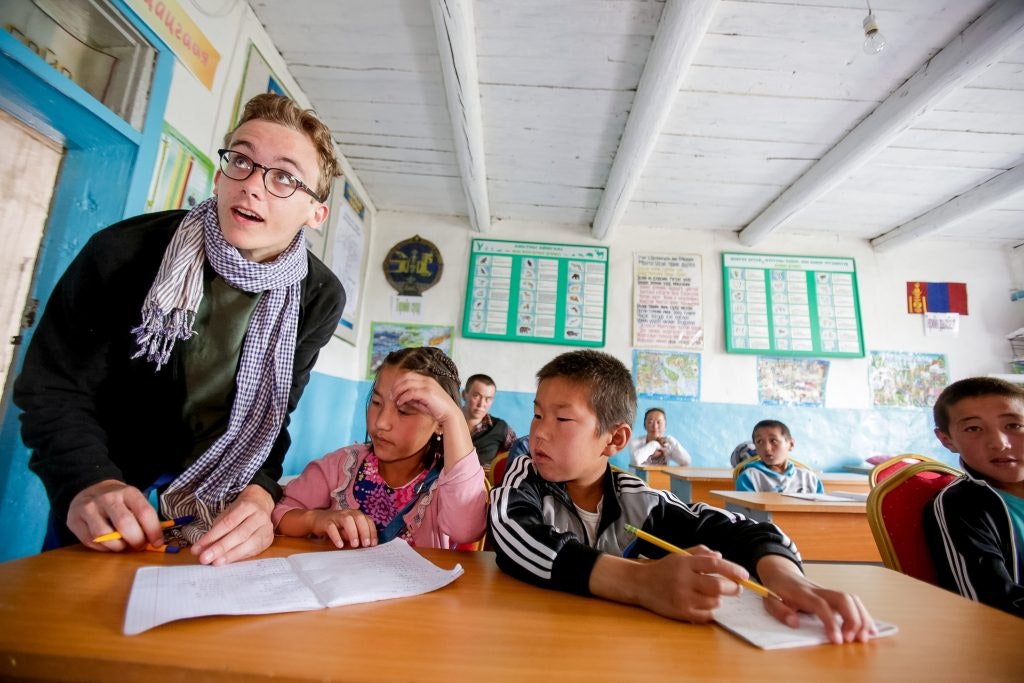
Rustic Pathways students teach English to Mongolian children in the Off the Map: Mongolia program. Copyright: © 2015 Rustic Pathways
Students interact with local children while spending time with Mongolian nomads, who live without most Western amenities. This program is one of Rustic’s longest so there is time to travel to remote regions and embrace a very different kind of world.
Throughout much of the program, Rustic students stay in Mongolian tents called gers. They eat local animal-based foods like meat, yogurt and cheese. They also are immersed in the cultures of different nomadic communities that live amid dramatic landscapes.
Anya says about a third of the population live a nomadic lifestyle, and they survive by herding animals. The country has about 70 million herded animals, including yaks, goats, sheep and camels.
A number of indigenous Kazakh families also have golden eagles that they train for hunting. An internationally-released documentary about a young girl learning how to be a huntress has made the practice well-known outside Mongolia. In the past only men were hunters but now some girls are learning to keep the tradition alive.

To help all these family-owned animals survive, the people have to move. During the winter, temperatures can fall to minus 30 or 40 degrees Celsius in some regions and can be very windy. Therefore, the nomads move at least twice a year in the summer and winter.
Some nomads move more when local grasses become depleted. They relocate up to eight times a year.
The gers they stay in are generally made from natural ingredients like wood, felt and leather. In the summer gers are placed on the ground and in the winter they add floors. They are constructed in such a way that locals can easily put up and take down the intricate tents.

In some remote regions, there also are small villages for locals who have lost their herds. They build homes and other permanent structures with insulation to endure the weather. During the service portion of the program, students help build these homes.
2019 traveler Rachel Rowland says these service projects helped her learn new ways of communicating.
“With sign language, we were able to connect and help each other. This skill was very helpful when I worked alongside a woman when I was helping build a house in Mongolia,” Rachel said.
Mongolian is the official language of the country, but ethnic groups like the Kazakh and Tuva have their own language as well. Regardless, children in Mongolia are required to learn English in school. The Rustic students help local children with their English lessons through songs and games.
Anya says it’s very helpful for the local children because most days they’re learning from teachers who know English as a second language and may struggle with accents and other details. Therefore, it’s beneficial for Rustic students to teach the children.
“When native speaking English students come to the region and talk to the kids, it really helps the children open up their ears to the English language,” Anya said. “The kids really like practicing and the Rustic students inspire them to learn the language.”
The Rustic students also learn traditional games like the ankle-bone game that they can play with the local children. When they aren’t providing service or interacting with the local community, they are hiking and learning about history.
Chinggis Khaan united the nomadic tribes in the region back in the late 1100s and then launched the Mongol conquest. Anya says the West often refers to him as Genghis Khan, which Mongolians consider inaccurate.
“Khan is just a village king or a tribal king, but then Khaan is king of all the tribes. Chinggis is his title… which is supposed to mean ocean,” Anya said. “In 1206 he was given this title Chinggis Khan so he’s a king as big as the ocean.”
Eventually the conquests of the Mongols created the largest contiguous empire in history, including much of Eurasia. Historians have varying views of this period with a number noting the brutality and widespread deaths that occurred as Mongol forces invaded other lands.
However, in Mongolia Khaan is honored as a great leader who spread groundbreaking ideas throughout the world. Among his accomplishments were the establishment of free trade along the Silk Road, the creation of universal law that forbade theft, slavery, and harm to the environment, and the establishment of a universal writing system.
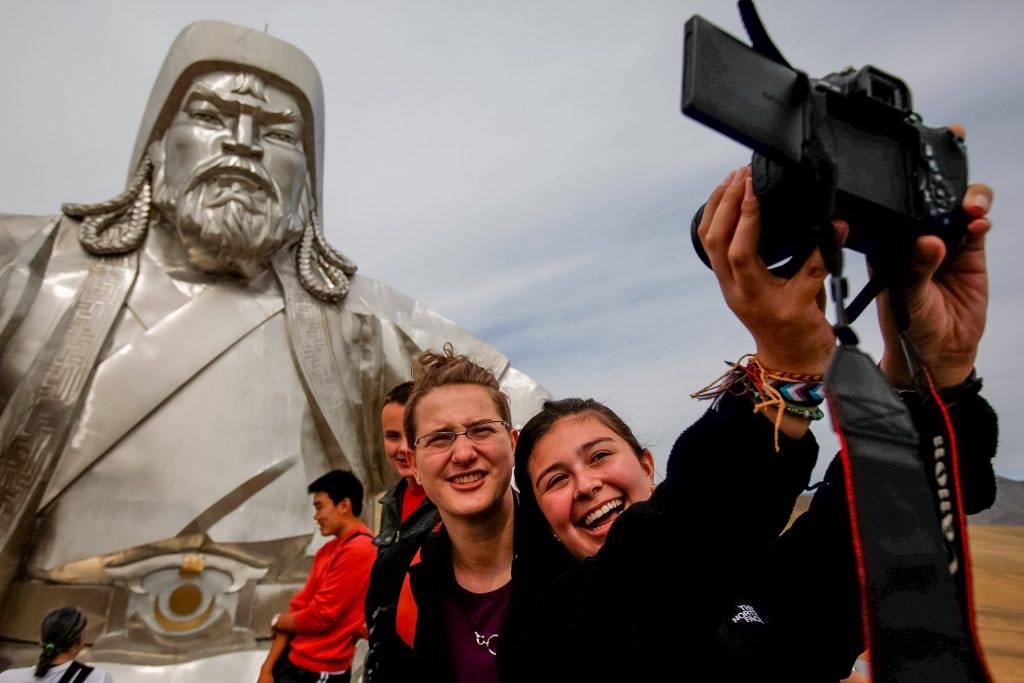
Copyright: © 2015 Rustic Pathways
“He was the smartest king that we had ever had. A lot of things that he has done are part of the Mongolian pride like starting the international passport system, the postal system, the use of paper money, and allowing the freedom of religious belief,” Anya said.
Rustic students will learn about all this while visiting the country. They’ll visit the National History Museum of Mongolia. They’ll also go farther back in time and learn about the dinosaurs that roamed the land as well.
This happens towards the beginning of the program so students can appreciate the rich history as they roam the country.
The program includes progressively longer hikes to prepare them for the ultimate trekking experience – walking through the Altai Tavan Bogd Mountain Range. This area is considered the figurative end of the world since it includes the point on earth that is farthest from any ocean.
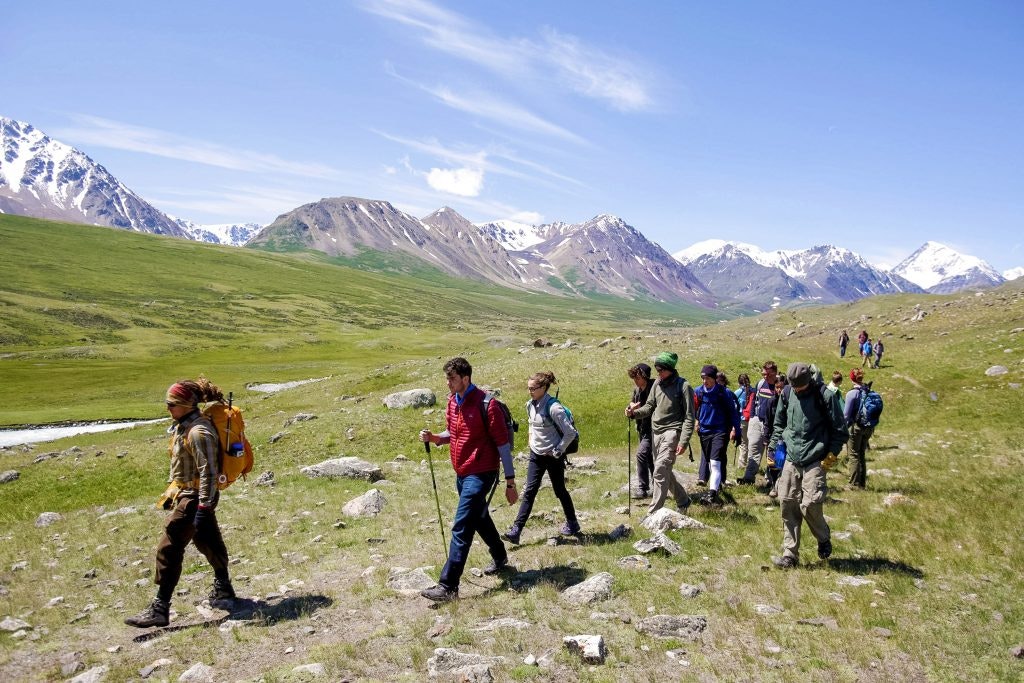
Copyright: © 2015 Rustic Pathways
The snow-capped mountains provide the perfect backdrop as the students camp in this remote location. Rowland says it was one of the most memorable moments for her during her international travels with Rustic.
“Each country had dazzling wonders that were unique in its ways. I will never forget camping under the stars in the Altai Tavan Bogd mountain range national park in Mongolia,” Rachel said.
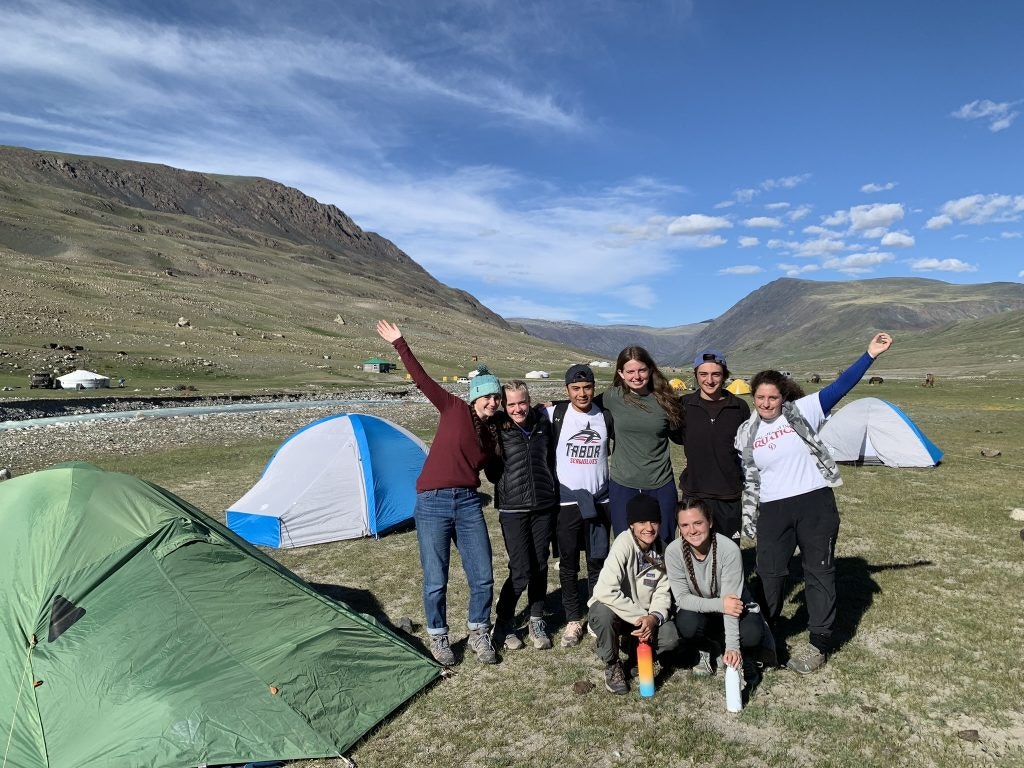
Photo: Rachel Rowland, Mongolia
While in the region, the students view ancient petroglyphs or rock carvings. Anya said one of her favorite parts of the hiking experience is seeing the lakes.
“We hike to the Blue Lake and the Green Lake. They are very picturesque. You have a glacier mountain in the back and this beautiful jade-colored lake right in front of you. If the sun is perfect you get the reflection of the mountain in the water. While staying there, our students have their own meditation moments,” Anya said.
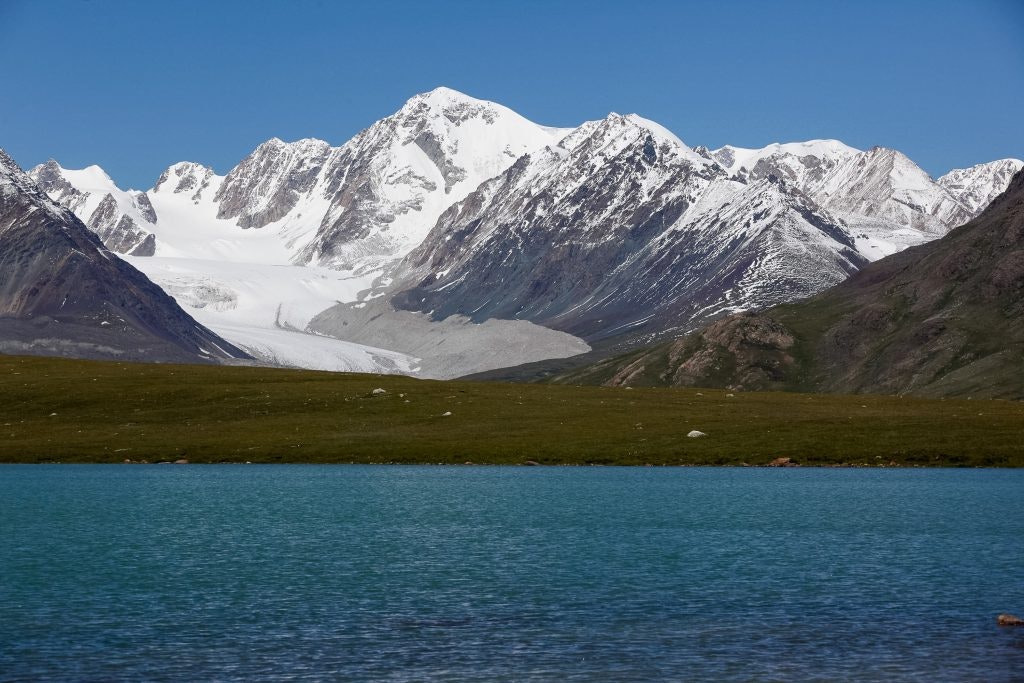
Copyright: © 2015 Rustic Pathways
2018 traveler Ana Aaland relished these experiences when she traveled to Mongolia with Rustic. She signed up for the Mystery Trip so she didn’t know her destination, but she said her program was amazing. Like other students, she ended up being grateful for her journey through lands where few Westerners go.
“I went to a country I would have never otherwise explored and ended up adoring it,” Ana said.
Students who want to learn more about Mongolia can view our country book. For more information on the Off the Map: Mongolia program, please visit our Mongolia page.